The man who sought a ‘theory of everything’
Stephen Hawking was the most recognisable scientist of modern times. His life fascinated people for decades, culminating in an Oscar-winning portrayal of him in the film 'The Theory of Everything'.
The film's title was a nod to his scientific life. Hawking spent years looking for a single theory that describes our Universe. And despite debilitating illness, he was one of science's great popularisers, conveying his ideas to millions.
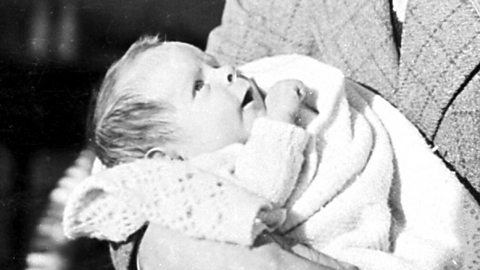
8 Jan 1942
A very normal young man
Hawking was born on 8 January 1942 and grew up in St Albans, the eldest of four siblings.
His father was a research biologist and his mother a medical research secretary, so it was not surprising that he was interested in science. As a student he was drawn to physics and maths as he believed they offered the most fundamental insights into the world. But nothing marked him out as special from his classmates or in his first term at Oxford University.

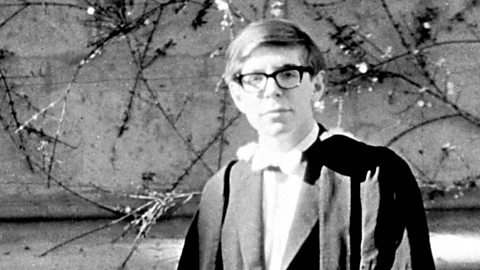
1965
Stephen marries Jane Wilde
Stephen got a first in Physics from Oxford, and started a PhD at Cambridge. His own private universe expanded when he proposed to his future wife.
Jane was also from St Albans, and was a modern languages undergraduate. She had met Hawking at a New Year’s party, before his diagnosis. The couple decided to marry quickly, because they did not know how long Stephen had to live. As Stephen's health deteriorated, he took to walking with a stick. Jane, who was two years younger than her fiancé, had to seek a special exemption from her college as students were not normally allowed to wed.

1966
A new way of thinking about the world
Hawking escaped the limits of his disability by training his mind to work in a new way.
As he started to lose the use of his limbs, he developed a way of visualising problems in his mind to reach a solution instead of by writing equations. Some of his colleagues have suggested that this way of thinking has led to his greatest discoveries. Hawking was now working on one of science's most bizarre ideas – black holes. An extreme prediction of Einstein's general theory of relativity, they are created when huge stars collapse to zero size and infinite density – known as a 'singularity'.
Hawking's disease gave him a unique perspective on the world
1970
Could black holes provide clues to how the Universe began?
Hawking's work on black holes helped prove the idea of a 'Big Bang' at the birth of the Universe.
Developed in the 1940s, Big Bang theory was still not accepted by all cosmologists. Working with mathematician Roger Penrose, Hawking realised that black holes were like the Big Bang in reverse – and that meant the maths he'd used to describe black holes also described the Big Bang. It was a key moment in showing the Big Bang really happened. As his body deteriorated, Hawking's career was taking off.
Stephen's work reveals clues to the nature of time. (Clip from 'Profile', BBC Four)
1974
In search of fundamental laws of physics
Hawking realised black holes could be a way to explore physics' holy grail: a unified theory that combined general relativity with quantum mechanics.
These two powerful but incompatible theories describe the universe at the cosmic scale and subatomic scale respectively. Hawking's attempts to combine them produced a surprising result – that black holes should shine. This effect is now known as 'Hawking radiation'. The work cemented his reputation as a key thinker of his generation. In 1974 he was elected as a fellow of the Royal Society, aged 32, and one of the youngest people to achieve this honour.
Find out more about Hawking's remarkable discovery about black holes. (Clip from 'Horizon', BBC Two)
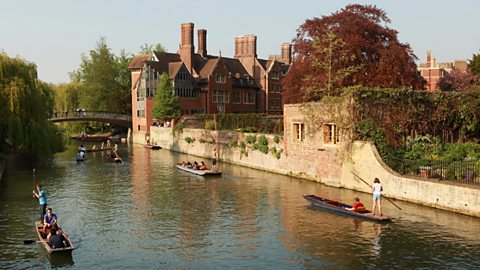
1979
Hawking chosen as the heir to Isaac Newton
Aged 35, Hawking became Lucasian Professor of Mathematics at Cambridge – a post held by some of Britain’s most important physicists including Newton.
He had reached a pinnacle of intellectual achievement despite the facts motor neurone disease had ravaged his body, he could no longer walk or feed himself, used an electric wheelchair to get around, and slurred his speech so much that many struggled to understand him. Yet he had already outlived the predictions of his doctors by more than ten years.

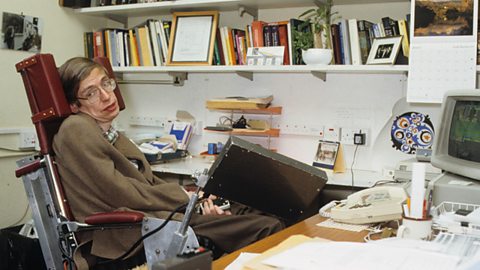
1985
Stephen loses his voice but finds a new one
While in Geneva, Hawking was admitted to hospital with a life-threatening bout of pneumonia. His life was in the balance.
Doctors could only save Stephen by performing an operation that robbed him of his ability to speak. Now he could only communicate by raising his eyebrows. Stephen was distraught, but once again he refused to be beaten. His friends helped him use a cutting-edge speech synthesizer which gave him a distinctive new voice. One of his first requests once he’d mastered the system was that someone should help him complete a new book he had been working on.

1988
A Brief History of Time
Hawking's introduction to cosmology is one of the best-selling books of all time.
Hawking wanted to explain his work to the public, and to make some money to provide for his family as his health declined. A Brief History of Time was a best-seller for four years. Hawking believes its success is down to giving people access to great philosophical questions, but acknowledges human interest boosted sales. The book went on to sell over nine million copies. It turned Hawking into a celebrity and transformed his life.
Hawking's popular account of modern Physics proved an instant bestseller. (Clip from 'Profile', BBC Four)
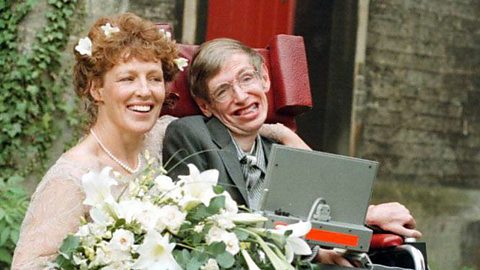
1995
Stephen marries for a second time
After 25 years of marriage and three children, Stephen and Jane Hawking separated and divorced. Stephen married his nurse, Elaine Mason.
As Hawking had become a household name, his home life had suffered. Fame and illness proved too much of a strain. Hawking described his new relationship with Elaine Mason as 'passionate and tempestuous'. His second marriage lasted eleven years. He cited the pressure of his illness for its eventual breakdown.

1999
An icon of popular culture
In 1999, Stephen achieved what many regard as the ultimate accolade: his first guest appearance on the Simpsons.
By now he was an iconic figure, as famous for his public writings and cameos as for his scientific papers. He had presented a documentary series, 'Stephen Hawking's Universe', guest starred on ‘Star Trek: The Next Generation’ and lent his distinctive voice to Pink Floyd’s album ‘The Division Bell’. And he continued to publish popular science books.
Watch Stephen Hawking’s appearance in the Simpsons episode They Saved Lisa’s Brain. (Clip from The Culture Show, BBC Two.)
2004
The black hole information paradox
Hawking's work on black holes continued. In 2004, he came up with a bold new idea, over the question of whether black holes break the laws of physics.
One of the ideas underpinning quantum theory is that physical properties of subatomic particles (or 'information') cannot be destroyed. For years, Hawking argued that black holes don't destroy information, but never shown how. At a conference, everyone expected a defiant defence of his ideas. Instead Hawking made a startling U-turn. His controversial new theory – that the information is transmitted into other universes – demonstrated he was still rethinking his image of the Universe.
What was Hawking's bold new theory about black holes? (Clip from 'Horizon', BBC Two)
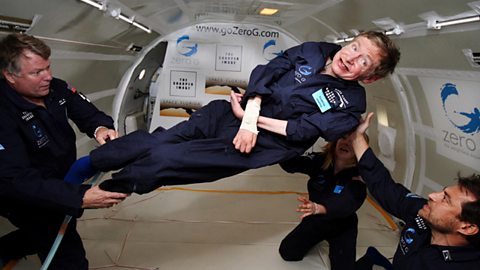
2009
Stephen declares ‘I’m not retiring’
As required by Cambridge University regulations, Hawking stepped down from the post of Lucasian Professor of Mathematics when he turned 67.
By now, he could no longer use his hand to operate his wheelchair, and could only communicate by moving his cheek muscles to control his speech synthesizer. However, he announced that he intended to continue working. Unable to take on the administrative responsibilities of most senior scientists, he was able to continue what he did best - thinking. He took up a new post at Cambridge and continued publishing in leading journals.

2010
The Grand Design
In his best-selling book The Grand Design, Hawking made more bold claims about the hunt for a theory of everything.
Hawking backed a radical new idea: M-theory. It predicts that there are many universes, and that there is no theory of everything to describe our particular Universe. Instead the laws of physics are different in different universes; ours happens to one in which the conditions are right for life. M-theory's conclusions were unpalatable to many who had spent their lives searching for a theory of everything, and some physicists dismiss M-theory as little more than speculation.
Brian Cox asks whether our Universe is one of many in a larger multiverse. (Clip from Human Universe, BBC Two)

2014
Hawking celebrated on the silver screen
In ‘The Theory of Everything’, Eddie Redmayne gave an Oscar-winning portrayal of Hawking.
The film was based on the book ‘Travelling to Infinity: My Life with Stephen’, by Stephen’s first wife Jane. Jane and Stephen collaborated with the production team, and he allowed his voice to be used on the soundtrack. Hawking himself praised the film and claimed he had trouble distinguishing photographs of his early life from photographs of Redmayne. The film became a lasting testament to Stephen's ability to inspire scientists and the public alike.

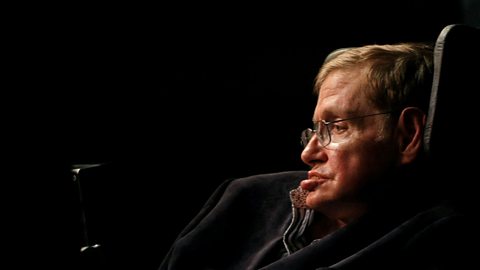
2018
An astounding life
In March, Professor Stephen Hawking died. For fifty-five years, he defied a disease that should have killed him in five.
The time spent since his diagnosis was not just about survival – he produced all of his world-changing work. His brilliant theories advanced the ideas of Einstein and ushered Hawking into the pantheon of important modern physicists. His surprise top-selling book and iconic appearance may have introduced and endeared him to the general public, but his ideas on gravity, black holes and the Big Bang will be his greatest legacy.
